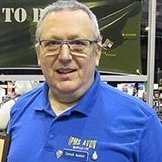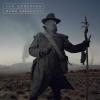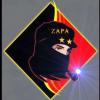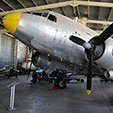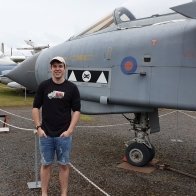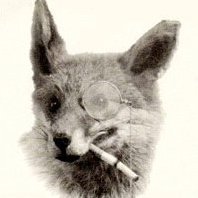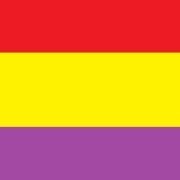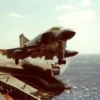Search the Community
Showing results for tags 'Luftwaffe'.
-
I was chatting on the forum after posting some pictures of a finished project when I was asked ‘What next?’ I explained that I wanted to do a detailed diorama based around the Revell 1/32 Fw 190 F-8 having been inspired by a diorama on the LSM forum by a gentleman with the on-screen name of Colt6, it’s well worth a look if you’re over that way and I thank him for the inspiration. The comment, 'I hope you're going to do a WIP?" is responsible for what follows! So, what am I planning; the title means ‘Brake over, back to work!’ or at least I hope it does as I used an online translator. It is based around a FW190 F-8 undergoing minor servicing in the field, the crew are taking a break and having a quick game of cards and are caught by the crew chief and pilot. The basic layout plan is this: The main elements will be: · The Revell 1/32 Fw 190 F-8 Kit augmented with: o Eduard Brassin Engine o Eduard Brassin Cockpit o Eduard Brassin MG131 guns o Eduard Brassin Wheels, prop and spinner. · Italeri’s 1/35 Kublewagen · Dragon’s 1/35 Kettenkrad · Verlinden Productions diorama accessories of: o The Luftwaffe Service Cart o The Luftwaffe Power Cart o The Luftwaffe Bomb Trolley · Various other diorama bits and pieces including MB and Verlinden Production figures as well as some scratch built stuff! I am breaking considerable areas of new ground with this diorama and my aim is to show how an average modeller copes (or not!) with something new and challenging. The aim being to encourage other modest modellers to ‘have a go’ and stretch themselves. I have started some elements of this build so I will catch them up in the relevant areas as per Forum instructions. I think this is probably enough for the first chunk though, I’ll be back here soon with the build of the VP elements listed above.
- 62 replies
-
- 4
-

-

Graves of Military Pilots, WWI & WWII, Vienna
Roman Schilhart posted a topic in Aviation Photography
Dear fellow Britmodellers, last weekend I took a long walk at Vienna's Central Cemetery, one of the largest in Europe. It holds a number of graves of interest for aviation historics, such as that of Franz Wels (Wels-Etrich Taube) or Franz Mannsbarth (designer of the first Austro-Hungarian airship). Also, Austria's most successful fighter pilots from both World Wars have been laid to rest here. First picture is at the grave of Godwin Brumowski, the most successful fighter ace of the Austro-Hungarian empire. He was credited with 40 victories (some sources say 35). He went on to become a flight instructor with Austrian Aero Club after the war. In June 1936, he got killed when an airplane piloted by one of his students crashed at Amsterdam-Shiphol airport. This is the grave of Walter Nowotny, Carrier Of The Golden Honor Ring of the city of Vienna, youngest Major in the Luftwaffe and commander of the very first operational jet squadron in history, credited with 258 aerial victories. He died November 8th, 1944, when his Me-262 crashed near Epe, Westaflia/Germany. The inscription reads: “Carrier of Oak Leaves with Swords and Brilliants to the Knight’s Cross, Eternal is his fatal fame”. May we never forget, never repeat history! With greetings from Vienna, Roman Schilhart- 1 reply
-
- 3
-

-
- War Graves
- Luftwaffe
-
(and 1 more)
Tagged with:
-
May I present my rendition of the new tool Eduard 1/48 Fw190A-4. This kit has been built out of the box with only the addition of Master Mg FF gun barrels, a replacement pitot tube (hypodermic needle) & a few detail additions such as brake piping, some extra detail in wheel well. This is a truly superb kit and is an easy build especially in comparison to the older tool 190s of Eduards, the kit as seems to be on a par with the new tool 109s in supplying many spare parts for future variants, which will come in useful building Eduards old tool and other manufacturers 190s. This kit has rectified the accuracy problems of the previous 190s, the tail fin is now the correct width, cowling shape more accurate & correct width wheels (2 pairs). My only uncertainty is all the recessed rivet detail - overdone??? Being a kit builder of the old school and having probably sanded off thousands of rivets off kits over the years I may be a little bit biased about them!!! Anyway here she is:- This photo shows the effect of the rivets after painting:- The rivit detail has not been specifically 'washed' although a panel wash was applied sparingly to the engraved panel lines, judge for yourself whether the rivit detail is a bit much!! I did not use the kit decals as they were matt finished & I wasn't going to risk trying them on this model, a bit of a retrograde step by Eduard? For those interested the unusual camouflage scheme came from the small b/w photo above on the right, it is of a Fw190A-4 of 4./JG 2 White 14 inTunisia 1943. I was intrigued by the camouflage scheme which appears to be the standard fighter scheme of RLM 74/75/76 however the 74 has a mottle which appears to be RLM 79? A closer scrutiny of the photo seems to show the lighter colour on the port wing matches the mottle on the RLM 74 so possibly RLM79 ?? The lighter of the colours on the starboard wing is darker than the light colour on the port wing so that colour could be the original RLM 75??? As the fuselage cross is just plain black could it be when this photograph was taken the aircraft was being repainted with tropical colours?? I have included a photo of my model in b/w to try & justify my conclusions, judge for yourselves!! I highly recommend this kit & applaud Eduard for re-tooling their series of 1/48 Fw190s. Cheers Andy
- 17 replies
-
- 25
-

-
This is the 4th one I've built but the first in this scheme. One of my favorite kits to put together.
- 14 replies
-
- 34
-

-
My build of the 1/72 Huma kit. Largely OOB, apart from the interior framing and outsize swastika from a Microscale sheet.
- 6 replies
-
- 8
-

-
- Luftwaffe
- Assault Gliders
-
(and 1 more)
Tagged with:
-
Hi Next "odd and old" German - Dornier Do 18. Kit by Revell (named D-2/G-1) rebox of former Matchbox. The kit is not very accurate (as was already discussed several times I think on BM). The main flaw is that In real thing variants D-2 and G-1 had different noses (G-1 more sharp or "cruiser-like") and side-floats (G-1 larger) as well as engines and turret, whereas the plastic parts are the same in box (except the turret). After looking on photos I came to conclusion that side-floats are rather that of D variant but the nose is neither of them (but closer to G). So I decided to do D-3 variant, which from what I've lerant had smaller engines, sharp nose like G but small side-floats - so it should look like D-2 with G-type nose. The propellers in my model are resin copies of A-model Do-26 ones, front prop spinner is from drawer, rear spinner is also from Do-26 (civvie variant). I added fabric structure on fin, enforcement ("side walk") on top of fuselage, added new coolers, bombs, relings, add EZ rigging, reshaped air intakes and a made out of scratch beech buggy (or rather two buggies). The surface was sealed and re-scribed, and the nose was also corrected a bit. Painting scheme is from late 1939-early 1940 where large additional white crosses were introduced on all D-18s. The k6+IK is from 2/Ku.Fl.Gr. 406. The machine was lost on 28.09.1940. The unit emblems I took from Revell BV 138 (the unit use BV-138 after Do-18). Paint - Humbrol 243, 244 and 65 Here she is: (Edited on 23 July - I removed one photo and added four new) Comments welcome Cheers Jerzy-Wojtek
- 23 replies
-
- 31
-

-
- Dornier Do 18
- WWII
-
(and 1 more)
Tagged with:
-
Hi all Haven't done a Work In Progress build for a long time, so thought I would bring this one out for one I'm currently reading "Battle of Britain - A day to day Chronicle" by Patrick Bishop, so the model fits in nicely with that This model was bought when I went on holiday this year to the Isle of Wight, where we had a stop off at Hendon and a short detour for me to the Hannants shop down the road. Would have been a wasted opportunity otherwise! The model cost me just £5 as it was from the second-hand section, but it was sold knowing some parts were missing so I will have to work around this as best as I can. Still, couldn't leave it at that price he said foolishly! So here's what I've got to work with: Most parts look to be still on the sprue and all the major parts are there as far as I can tell. I noticed one half of a aileron from one of the wings was missing, but should be able to replicate something to look like this. Now to get started on all that lovely internal cockpit detail! Cheers
- 15 replies
-
- 4
-

-
- Battle of Britain
- Luftwaffe
-
(and 1 more)
Tagged with:
-
This is my third build since being back into the hobby and starting 1/48 and therefore the model is by no means perfect; nor was the process. The kit is very enjoyable to build with the PE parts adding nicely to the overall effect, I decided to take advantage of the nicely designed BMW 803 and having it partially visible as well as the MG's on display. Despite the kit fitting very nicely, I had real troubles with the decals; the spinner decal crumbled and the black stripe broke on one side. This meant I had to improvise using tamiya tape for both the spinner and the black stripe design (if anyone knows what this is really called let me know because I expect 'black stripe' isn't the technical term) and painted it instead; although you can notice the spinner being hand painted I am still quite pleased with the result and am more than happy with the stripe which came out a lot better than expected. PS. the antenna wire will be re- done but for now it will suffice. PPS... The tub of water is holding plants which is why it is there, I forgot to move it before taking the photos Thanks
-
Hi, I am new to the forum and thought I would post my newly finished Airfix bf109. Before i show you the pictures, I would like to state that I have only just got back into the hobby after buying myself a proper air compressor. I have been ordering Mr hobby Aqueous paints as I am starting to buy more expensive models and would like to do them properly. For this model though, I used my humbrol enamel paints with some success. I am a bit dissapointed as I scratched the model quite bad from succesfully removing the paint that humbrol suggested ( it was way too dark for the underside) and also some of the parts melted a small amount too. All in all I think it went alright for my first proper airbrushing attempt although you will notice that my airbrushing needs a lot more practise and settings need more tweaking. The only extras I included was an edurd seatbelt taken from an old kit and a swastika taken from the same kit mentioned. Without rambling any longer, here is the finished kit, let me know what you think and more importantly, what you think I should do differently next time. As it will not let me post my images properly, I will add a link to imgur: http://m.imgur.com/a/zy9yK
- 5 replies
-
- 4
-

-
- Airfix
- humbol enamels
-
(and 1 more)
Tagged with:
-
Found a couple of Airfix starter sets of Hurricane Mk1 and Spitfire Mk1a on offer in Aldi before Christmas, had a play with the Hurricane and was drawn back 40-odd years to my youth when kits were in bags and enamel paint was rather gloopy! A 25 yr career with Betty Windsor's Flying Club fixing the noise-makers took the shine off models, well that and the beer! Now settled down and have discovered that I am a very basic modeller but who cares, I am doing it for fun! Some really good instructional videos on YouTube have got me sorted with some airbrushy stuff, need reading glasses to make them these days, just looking forward to playing once the Memsa'ab is happy(ier) with the house and gives this guy a break. Started on a stash, all Airfix so far, Whitley MkV, Stirling BI/III and the VC set to give me a few kits to play with! Just need the man-cave set up and away I go, hopefully! Have recognised a couple of guys on here from my past, could be scary! 😉
-
Let me begin by saying I'm not into the 'What If' Luft.'46 scene. I prefer to build aircraft that actually flew, even the development and prototype machines so this particular build is the exception to the rule! Having seen the builds of the S.W.S. 1/32 scale kits and the very good reviews they were given, when they down scaled some of their kits to a more acceptable 1/48 scale (personal opinion!) I had to build one. I chose the Horten Ho229, result not quite as expected!!! The ill fitting panels were the biggest problem I encountered, I was unsure how to display the 229 when I was building it, it seemed a crime to conceal all those internal details:- My decision to display was eventually to attach the underside panels permanently, after painting and the nose 'cone' and leave the upper panels loose to display the innards:- As can be seen the panels are a terrible fit probably due to my own fault whether this would have been rectified had I left all the panels transparent but glued them into place??? This kit is not an easy build, many times this aircraft nearly made it's maiden flight across the room, but for the cost I felt I had to finish the build. I have a feeling the engines were one of my problems in that they didn't fit in the frame as they should have. This resulted in not being able to fit the nose 'cone' properly and with the main top panel not fitting very well left a large gap between them. I lost count of how many times the wings fell off and eventually resorted to using wire from a paperclip to hold them permanently in place. As can be seen some of the other panels weren't a brilliant fit either. Colour scheme - as the original machine was captured by the Americans and totally repainted in spurious colours and markings, no record seems to exist of the original markings or colours. I followed the premise that as a prototype it may have been painted RLM02 Grau overall. A little research on the web turned up a research paper into the study that the Germans were attempting to make the Ho229 a stealth fighter!! It has been dismissed that, that was incorrect, but what interested me was that upon removing one of the metal panels they found a green paint on the plywood it was covering and mention was made of some of the interior being painted in the same paint. This was thought to be a fire retardant paint, so I decided to break up the overall grey scheme with some green paint on the 'tail' and also on the interior. Unfortunately the decals on the top wings silvered slightly but by this time I had had enough of this kit. I am not criticizing this kit I put most of the problems down to losing patience with the build and things not working out the way I had hoped, if you want a demanding build try this kit!!! All the best Andy
-
Very stress-free build this. Added some Eduard syeel seat belts and some brake lines too.
- 11 replies
-
- 21
-

-
I've just completed my 1:72 Heinkel He 111 from Revell, a second part for the diorama (the first part was this Stuka). It was very nice build without the major problems. In fact the set is so good that there were no problems at all. You can see the progress here Here are some pictures of the finished model. More when the diorama is finished.
- 16 replies
-
- 33
-

-
Hi, Another Messerschmitt - Me 262 a1a, Revell, decals from drawer, markings of a/c W.Nr 110826, ,9k+LK belonging to I/KG(J)51, Germany spring 1945. Comments welcome, cheers. Jerzy-Wojtek
- 14 replies
-
- 12
-

-
At the present I am unable to model (not the catwalk variety!!) due to recovering from an operation on my hand, nothing too serious I'm glad to say. The last project before this was the build of 4 Bf109s, all 1/48 (my scale), 2 x Eduard new tool, 1 x Eduard original tooling, 1 x Hasegawa and I've also included another Eduard original tooling that I built when first released. Can you identify the kits? No prizes I'm afraid ( living on a pension!!). (1) Messerschmitt Bf109G-6 (sub type unknown) Red 1 2./JG300 26/6/44 Germany This is one of the Eduard 1/48 new tool kits built with the addition of Brassin cockpit, Eduard photo etch and Eagle Editions decals. All these models were painted with the Vallejo model air paints which give a very good match to the RLM colour reference I use by Michael Ullman. This particular aircraft was painted in one of the many schemes trialed by JG300. The main upper airframe colour was a 50/50mix of RLM 74 & 75 to which was added mottle of a mixed grey in my case RLM 66 toned down with white. Undersurfaces RLM76, fuselage band I painted RLM 45 Rotbraun (primer). I do not add an awful lot of weathering to my models as their service life was probably not that long. I really found these new tool Eduard Bf109s a joy to build especially with the brassin cockpit, my only criticism being the exhausts and openings which are very slightly oversize but can be reduced with a little work. I did not make this alteration to the two new tool builds here as the exhausts are covered. (2) Messerschmitt Bf109G-6 White 7 W. Nr163269 4./JG51 June1944 Bulgaria Again the new tool Eduard kit finished with same accessories as Red 1 above. Typical RLM 74/75/76 scheme with full stencil markings, again machine in fairly clean state. (3) Messerschmitt Bf109G-2/R-6 Yellow 10 W. Nr.14800 6./JG5 April-May 1943 Russia This is the first of the Eduard original tooled 109s. This is the 109G-2 from the Royal Class boxing,as the main problems with this kit was fuselage too long, wings overspan, u/c at incorrect angle.I modified all the problems (my article over on Aeroscale a year or two ago described the methods used http://www.aeroscale.co.uk/modules.php?op=modload&name=features&file=view&artid=5612 . The cockpit was detailed using the kit components plus a few extra details, the underwing gondolas were the Brassin parts that were included in the Royal boxing with barrels from a hypodermic syringe. Colour scheme for this machine was very interesting, originally intended for topical operations the paint scheme was RLM 78/79. It was however delivered to JG5 operating in a northern theatre of operations where it received a coat of washable white paint and RLM 70 mottle. However patches of the original 79 still showed through giving the aircraft a tri colour scheme. Decals were sourced from several different sheets. I note that Eduard have just released the Bf109G-2 and that one of the schemes is the aircraft that this one replaced!! (4) Messerschmitt Bf109G-5 Yellow 11 W. Nr.27119 9./JG54 Spring 1944 Germany This is the original tooling of the Eduard Bf109G-6 and the kit I modified shown over on Aeroscale. I built it as a G-5 version simply because of the scheme in the Eagle Editions decal sheet I had. Scheme is originally standard RLM74/75/76 uppersurfaces were then sprayed over with RLM 76 leaving the original colours showing through. (5) Messerschmitt Bf109G-2 White 2 4.JG/54 Autumn 1942 Russia Now for the odd one out, this is the old Hasegawa G-2 released way back and purchased when Hasegawa kits were reasonably priced and not the stupidly outrageous prices they now charge even for kits this old and way below the standards that we have come to expect from manufacturers these days.If Eduard can retool!! Mind you if Hasegawa did retool their 109 family what PRICES enough of my thoughts on 'Hasedearer' pricing. These 109s when first released were the most accurate around even though they suffered with incorrectly shaped spinners, short fuselages and incorrect profile on the rear fuselage, they were the best around. I added a fair few to my stash over the years, some I actually built I replaced the spinners with the Fusion resin replacements but attempted no other modifications other than adding Aires resin cockpits. Then recently after the first tool Eduard kit and my fix thereof, I decided to re-examine the Hasegawa offerings. I decided the incorrect rear fuselage I could live with, however I decided to add the missing 2mm of length in front of the cockpit with plastic card and sand to shape after reattaching the nose I had previously removed with a saw. I then proceeded to add detail to the kit using the large amount of spares from the Eduard kits;- I used the wheel well walls with a little surgery, the wheels (far superior to Hasegawa's) replaced the nose intake (because I could!!) spruced up the intakes rubbish on the Hasegawa kit and used the Eduard tail wheel. Then added Fusion spinner & blades and Aires G-2 resin cockpit. You see above the end result, thus modified I don't think it looks too out of place with the Eduard 109 family! The colour scheme for this machine was easy to choose as I wanted to show the varied schemes used by JG54 especially the use of the mixed browns they used, mine was mixed from the various recognition colours red,blue,yellow,green & white eventually almost coming out similar to RLM 79. other colours used were RLM 70/71/76. Decals came again from a variety of sources. Well that was my last pre-op project now waiting for my hand (right one had to be didn't it) to be able to hold a scalpel again I've been thinking about future projects. One I'm considering is bringing all my Hasegawa 109s up to standard, we shall see. Hope you enjoyed perusing my post. Regards Andy
- 15 replies
-
- 22
-

-
Can anyone help? I don't have an airbrush (yet) but I am getting quite good with rattle cans. I am trying to find the right colours - either from Humbrol or Tamiya cans for a typical BF109 Battle of Britain era "Splinter Scheme" - the humbrol pot list is as follows... 31 - Slate Grey 65 - Aircraft Blue 117 - US Light Green The problem is they only offer them as "tinlets" I have found this link https://www.emodels.co.uk/download/AS-chart.pdf to the Tamiya aircraft spray range but haven't got a clue which cans to go for - though some do say Luftwaffe - I am not sure what I'm doing Any help in pointing out the best matches would be greatly appreciated
-
I am building this kit for inclusion in my first attempt at a comprehensive aircraft diorama the details of which are in the Diorama WIP here. To complement the kit I have obtained the following: Eduard Brassin FW 190 F-8 Set Part 1 comprising resin and PE replacements for: The cockpit The MG131 mount Landing flaps Eduard Brassin FW 190 F-8 Set Part 2 comprising resin and PE replacements for: Wheels Bronze undercarriage legs Engine Propeller Canopy Masks. All of this will be a substantial challenge for me ‘cos I’ve never done it before! My models have utilised cockpit PE and belts but never wholesale replacement of chunks with resin bits! In addition, I’ve decided to open the radio hatch and scratch build the radio. In for a penny……. I have started on this before I decided (it was suggested) I write this WIP topic so over the next couple of days I’ll post my progress so far. I am hoping that the trials and tribulations that I face will help and encourage other not so experienced modellers like myself to have a go. Subsequently I intend to describe briefly how I’ve done things and hopefully the experts out there will say ‘No it’s easier than that try this”. Also, when I hit a wall, hopefully someone will turn up with the wrecking ball! Watch this space.
- 41 replies
-
- 1
-

-

Valiant Wings The Dornier Do.335 Pfeil - Airframe & Miniature 9
Mike posted a topic in Reference material
The Dornier Do.335 Pfeil A Complete Guide To The Luftwaffe's Fastest Piston Engined Fighter Valiant Wings Publishing The Do.335 was The Nazi's last attempt to squeeze more power from the piston-engine by installing one at each end of the fuselage driving two props without the need for draggy engine pods on the wings. It was a large fighter, but incredibly fast, earning the name Arrow (German: Pfeil). Fortunately for the Allies it came too late to see much service, so could not change the course of the war, but it was a worrying prospect for Allied piston-engined fighters if ever they encountered one. Despite big plans involving many variants and improvements, only a few types saw service, and in tiny quantities, often for special operations that required the prodigious speed that the airframe could achieve. Perfect bound in a glossy card cover the book extends to 144 pages, and includes a set of 1:48 plans on the inside back cover that cover a number of variants, and show the size of this monster quite well. This edition is written as usual by the prolific Richard A Franks, with profiles by Richard J Caruana, both of whom are probably well known to most readers already. As with the rest of the series, the content is broken down into three sections, the first of which gives a concise history of the type, its development, and a limited amount of information about the projected variants that never left the drawing board. A decision was taken in planning the book not to delve too deeply into the "what if" paper projects, as there were many that would have expanded the scope of the book to monstrous proportions. The second chapter is the bit we're all interested in as modellers, as it details the available kits, and goes on to build a selection from different manufacturers and in different scales with the models built by some quite well-known names. There are reference photos aplenty in the following section, from period and contemporary photos and drawings, plus of course the isometric drawings of the different variants that is a boon to anyone like myself that can't remember things for toffee! From the diminutive Göpingen Gö.9 test airframe (a sort-of miniaturised Do.17 with pusher prop) to the bonkers Do.635 Zwilling (yes – two airframes joined on a central aerofoil section), each one is described briefly with the differences and notable points discussed in the surrounding captions. I suddenly have the urge for two more Pfeils in my collection… dammit! The full chapter layout is as follows: Airframe Chapters Evolution – Do.335 Prototypes Evolution – The A-series Evolution – The B-series Projects and Drawing Board Designs Camouflage and Markings Colour Profiles Miniature Chapters Do.335 Kits Building a Selection Building a Collection In Detail: The Do.335 Cockpit & Canopy Fuselage Tail Engine, Propeller & Cowlings Wings Undercarriage Armament, Ordnance, Sighting & Camera Access Panels Appendices Do.335 Kit List Do.335 Accessory List Do.335 Decal & Mask List Bibliography 1:48 Scale Plans Fold Out Conclusion A really useful book of an impressive aircraft that never achieved its true potential, and is nonetheless a personal favourite of mine. There is a lot of detail within the pages that will be a boon to the modeller, as well as the more general aviation enthusiast. There is a small box on one of the inside pages dedicated to Richard's cat Mandy, who died from cancer during the writing of the book. Having lost my cat Piglet this year, I would like to extend my condolences on their loss. Highly recommended. Review sample courtesy of -
Another Telford purchase, I'm building this one to break up 1/72 felixstowe build as I like to have a couple on the go at one time. Ive used eduard seat belts and stretched sprue for the wires with a heated pin making the hole as drilling was a bit fiddly. The straps for the pedals are tamiya tape. I'm going to button it up and do it out of the box as the plane in question is unlikely to of existed, I've seen the pics of the nose but it doesn't look as though it was ever used. I'll also add the remote rockets as well as a plausible what if. The plan is to do it as a fighter version and leave the nose in an unfinished state so it looks like it's been bolted on in a hurry (e.g. No camouflage added to it), anyone have an idea what colour that would be I'm thinking rlm 70 or it could also be 02 and even aluminum I guess? The gun sight is mounded in plastic so I cut it off and put a clear piece in. I used the decals for the instruments which went on fine.
-

Casemate UK Luftwaffe In Colour - The Victory Years 1939-1942
Mike posted a topic in Reference material
Luftwaffe In Colour The Victory Years 1939-1942 Casemate UK Once the nascent Third Reich had broken cover and begun rearming in the open during the latter half of the 1930s, their publicity machine went into over-drive to convince their people that they were übermensch, and that their armed forces were the best in the world, in anticipation of their successive land grabs to expand their empire. Colour photography had been available for some time by that point, although it was expensive, but the Publicity Machine run by Dr Geobbels used it to a great extent in their propaganda drive. The resulting stills were printed in the major propaganda organs of the day, such as Signal and Der Adler, but colour photography was sometimes used by those that could afford it during the early years of the war, which has resulted in some really useful colour evidence that was gathered incidentally to the real subject matter of friends and colleagues as they documented their experiences in the war. Colour developing wasn't as exact a science as it is today, so we have to make some allowances for this, and for the possibility that some prints have been reprocessed over the years, but it is still impressive to see, gathered together in one volume. Compiled and written by Christophe Cony and Jean-Louis Roba, the book extends to 192 pages in a portrait A4 format, with a perfect bound cover and quality glossy stock, which is unsurprisingly printed entirely in colour. There are 300 photos within the book, and they are of a wide variety of subjects, varying from candid snaps to posed publicity and unit archive style photos. The book is broken down into sections based upon location and campaigns, as follows: Introduction The Pre-War period From Poland to Sitzkreig Blitzkreig in the West The Battle of Britain and the Blitz Marita & Merkyr: Blitz in the Balkans Operation Barbarossa African Adventure and the Mediterranean Front In the West The Second Line: Schools, Factories and Training Photography throughout is excellent, subject to the limitations of the source material of course, and it is good to see so many of them printed large enough to see the details without squinting! There are all manner of aircraft types within the pages, from the ubiquitous Bf.109s to the Heinkel He.115 float planes and beyond. The final chapter regarding training shows some interesting shots of the gliders that were used initially to circumvent the Versailles treaty embargo on Germany having an air force, and later to test the aerodynamics of such advanced projects as the Me.163 Komet. The next volume in this series will document The Years of Defeat, following the Luftwaffe to their ultimate downfall and near annihilation at the hands of the Allies. Review sample courtesy of -
My grandfather was a navigator on Halifax bombers. One of his activites post war was reading war diaries, many of which were by German authors. I have quite a few, so many that a friend of mine refers to my bookcase as 'the National Socialist Lending Library'. :-D One of the books that I love most in my life is I flew for the Fuhrer. It is well written, accurate, eye wateringly honest (my 1953 1st ed. pulls no punches in his admiration for the Nazi system or his beliefs) and very enjoyable. I am sure most of you on here are aware of it, but for those that are not it is a really good window into the otherside of the air war over Germany and a vivid description of what happens to you when air superiority can no longer me maintained. Much like J.E. Johnstone he is honest enough to acknowledge that his survival was due in part to missing the Battle of Britain. I have re-read it countless times, and along with Desmond Scott's 'Typhoon Pilot' feel it is one of the outstanding books of the 2nd war.
-
Hello, here's my 1/72 Tamiya Fw-190 D. Photo etch parts (seat belts, antennas, dashboard) from Eduard. Pitot tube from Master Model. Decals from Model Alliance "Defending The Reich's Skies Pt.2". Painted with acrylics from the Gunze range. Small details picked out with Vallejo paints. Photographed by Wolfgang Rabel, IGM Cars & Bikes, Vienna. Thanks for looking!
- 13 replies
-
- 28
-

-
Luftwaffe WWII Early Colors - Acrylic Paint Air Set. AMMO of Mig Jiménez AMMO continue issuing new paint sets at a rate of knots, and are garnering fans with the quality of the paint. This set arrives in the standard Plastic box designed to facilitate hang on one of those merry-go-round display stands in shops. These can hold up to 4 bottles of paint. The bottles contain 17ml of paint, plus a stainless steel ball bearing for easy mixing of the paint by shaking. The yellow caps are indicative of the new BB equipped sets, which seem to be the norm these days from AMMO. The colours in the box are as follows: A.MIG-217 RLM 02 GRAU, A.MIG-231 RLM 65 HELLBLAUb, A.MIG-232 RLM 70 SCHWARTZGRÜN, A.MIG-233 RLM 71 DUNKELGRÜN. These sets should be a welcome addition for the Luftwaffe modeller, and an addition to anyone's range of colours. Highly recommended. Review sample courtesy of
-
Hi everyone, I am building Revell's 1/72 Ju-88 A-4. The kit features a colorful bird (4D+DT) from the 9 Staffel of III/KG 30. The instructions suggest that the engine cowlings, rudder, and the elevators should be yellow, while lower wingtips and fuselage band should be white. I have tried to find some photos for this color scheme, but have come short thus far. So here is my question, can any of you confirm the overall yellow engine cowling and elevators? To me, this seems odd, but not unfeasible. Any help is appreciated. TIA Jan
- 3 replies
-
- ju-88
- camouflage
-
(and 1 more)
Tagged with:
-
After residing in my stash since its initial release in 1999 and having collected add-ons and references for all this time, I have eventually pulled this kit from the stash to build. The end result being the following :- The machine depicted is based on a photograph found on the internet, as I wanted to avoid all the usual codes the 219 is usually depicted in. The actual machine was found semi-destroyed (cockpit & nose completely destroyed) at Munster Handorf April 1945, full code G9 + SK, belonging to 2/NJGr1.I have applied a werknummer which is in a batch applied to He219A-7 series although most probably incorrect for this particular machine. The kit is the only rendition of the He219 in 1/48 scale and whilst a fairly accurate kit lacks the detail usually expected in kits these days, but with the aid of the also 'vintage' Aires detail set, Cooper Details corrected nose, corrected intakes, spinners, blades from Ebay ( I believe them to be from Andreas Duda). Radar aerials & gun barrels from Master, masks from Montex & wire of various types. I am also grateful to Zoukai Mura for allowing you to download their instruction booklet for their 1/32 kit which gave me details I might have missed otherwise, would be even more grateful if they would downsize their kit to 1/48!!!!! I am not completely satisfied with the end result, at times I felt like consigning the whole thing to the scrap heap. This was due in the main to the poor fit between the Aires detail set and the kit its self (probably of my own making but still highly frustrating at times). I spent far more time on this project than I usually would, I leave you with some pics of the hidden detail within the finished kit. Andy

